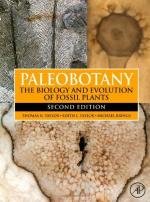|
This section contains 631 words (approx. 3 pages at 300 words per page) |

|
Paleobotany is the study of plants that lived in prehistoric times. It largely involves the study of fossils, that is, impressions of plant parts that have been preserved in sedimentary rock or coal. The most ancient plant fossils are of microscopic algae that lived more than one billion years ago, during Precambrian times. Paleobotanists also study much younger plant fossils, such as pollen in recent lake sediment.
One of the goals of paleobotany is to discover the earliest occurrences of different kinds of plants in the geological record. This knowledge of sequential occurrence of taxa is then used to develop an understanding of the evolutionary relationships among groups of plants. Other paleobotanists are interested in determining what fossil plants were like, and the kinds of animals that utilized them as food and habitat. This information can also be used to infer the characteristics of the ancient environment, including...
|
This section contains 631 words (approx. 3 pages at 300 words per page) |

|


